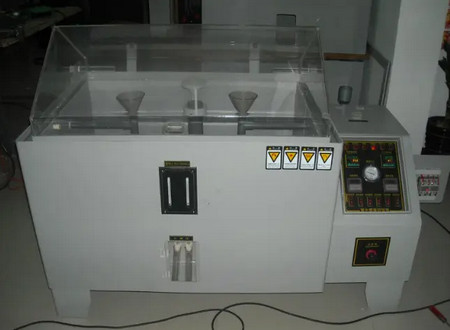- Qinsun Instruments Co., Ltd.
- Tell:+86-21-6780 0179
- Phone:+86-17740808215
- Address:No. 2578 Minhang District Gu Dai Road, Shanghai
- Contact:Mr. Li
- QQ:846490659
Adjusting the light source of the spectrophotometer

The tungsten lamp burns out after being used for a period of time, and the instrument's microcomputer self-test shows ERR3 (0 level light not found). In this case, the tungsten lamp needs to be replaced.
Before replacing the new tungsten lamp, it is necessary to use a small file or sandpaper to polish the lamp legs (as the lamp legs are often coated with black insulation paint), use a digital meter to test the buzzer block, and test that the insulation has been removed before the new tungsten lamp can be used.
Use clean optical lens paper to hold the new tungsten lamp (without gloves), gently press it into the lamp foot to fix it, then turn it on and adjust the light path. The purpose of adjusting the optical path is to allow the light spot to enter the slit and automatically enter the self-test program of the instrument. The wavelength display window shows the wavelength from (320~820) nm, and after adjustment, it shows 723C, indicating that the optical path adjustment is completed and the instrument enters the normal testing state.
To make the light spot enter the slit, it can be achieved by adjusting the spotlight or by adjusting the position of the tungsten lamp. Adjusting the position of the tungsten lamp is more important, and adjusting the tungsten lamp generally only emphasizes up and down adjustment. However, from years of maintenance practice, the author found that it is not only necessary to move the tungsten lamp up and down, but also to adjust it back and forth, left and right. We call it "XYZ three-dimensional adjustment method", which can quickly make the light source reach the ideal position and complete the light path adjustment.
Tips for adjusting the voltage of tungsten lamp pins
If the tungsten lamp is not burned out and the luminous intensity is insufficient, causing the instrument's microcomputer to self test and display an error of ERR1 (insufficient instrument energy), the resistance of the tungsten lamp can be measured first. If R=4.8 Ω, it indicates that the tungsten lamp is normal. By measuring the voltage of the tungsten lamp pin, it can be found that the voltage is too low. In general, when the instrument leaves the factory, the voltage of the lamp pin is adjusted to (10.5-11.0) V, mainly to extend the service life of the tungsten lamp (12V, 30W). The potentiometer 2W1 in the voltage stabilizing circuit can be adjusted to increase the voltage of the lamp pin to (11.5-11.9) V. At this time, the tungsten lamp is approaching high power, ensuring that the luminous intensity meets the requirements.
Other issues affecting level 0 light
Filters can also affect the level 0 light effect. In actual maintenance, it was found that after adjusting the optical path of the instrument, the filter should rotate synchronously during the startup test. Otherwise, the instrument's microcomputer self-test error displayed ERR3 (0 level light not found) or ERR1 (insufficient instrument energy). The instrument is driven by a wavelength driven large gear turntable, pulley, and nylon rope assembly to form a wavelength linkage mechanism. The gears on the pulley mesh with the filter shaft gear, synchronizing the wavelength value with the filter transmission.
When the instrument is turned on and the filter does not move, and the stepper motor is checked to be normal, it should be checked whether there is dust or looseness between the drive gear and the transmission small gear. After disassembling the small gear, reinstall it. Generally, the filter returns to rotation after turning on. If it still does not rotate, check if the 8155 and 1413 chips in the circuit board are functioning properly.





